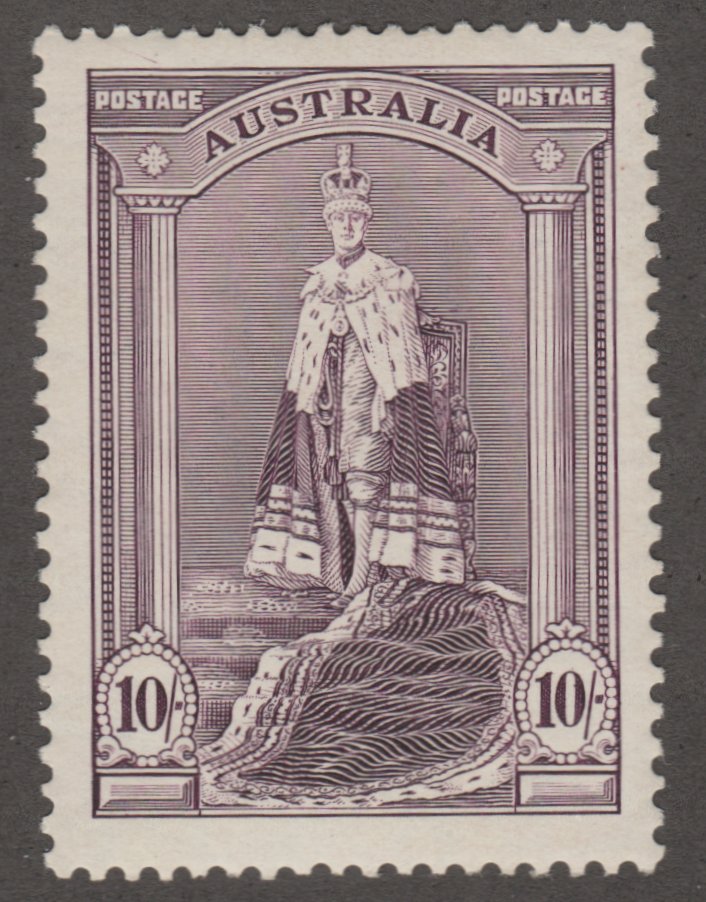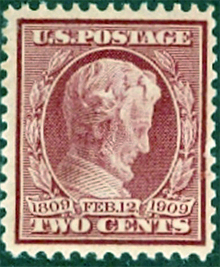
Discussion - Member to Member Sales - Research Center

Discussion - Member to Member Sales - Research Center

Thank you very much!

Login to Like
this post
It depends in part on what kind of perforation gauge you are using. The Instanta is far more precise than some that are available. There is an aluminum one that is particularly difficult to use. The advantage of the Instanta is that it measures fractions easily; in other words, you can tell with ease whether a stamp is perfed 12.3 or 11.9 or 11.4. Other readers will most likely recommend their favorite gauges.
These numbers indicate the number of perforation teeth per two centimetres. Perforation gauges are used by lining up the centres of the perforation teeth with non-parallel lines (Instanta and other types) or lining up the indentations with rows of variously sized circles (the aluminum gauges).
Hope this helps. The best advice I can give is to measure stamps of known gauges; that should teach you how to use your own perforation gauge.
Bob Ingraham

Login to Like
this post
Bob:
This is some great advice. Thank you! When you say "best advice I can give is to measure stamps of known gauges", this is one of the problems I am also having. I have purchased a couple of collections to get me started. I have no way of knowing whether the people that added the stamps to these books knew what they were doing. How do I go about finding stamps with "known gauges"?
Also, would you be kind enough to answer one more question at this time? Is there an obvious way to identify "rotary press" printed stamps verses "flat press" printed stamps???
I am having a very difficult time seeing any difference between a Scott #737 and #738.
Once again, thank you very much for your assistance!
Dan

Login to Like
this post
How do I go about finding stamps with "known gauges"?
Practice on a few stamps that came out in only one perf variety -- for example a commemorative.
Is there an obvious way to identify "rotary press" printed stamps verses "flat press" printed stamps???
You need either a reference copy of each, or a good millimeter guage. See the note after USA Scott #447 (at least it's there in the US Specialized catalog). The rotary press stamps are taller (wider in the case of horizontal format issues) -- generally by 1/2mm to 1mm.
A good perf guage will also have a good millimeter scale on it. naturally the thinner the lines, the better!
I am having a very difficult time seeing any difference between a Scott #737 and #738.
Those stamps are easy -- they are different perfs. 738 is perf 11 x 11. 737 is perf 11 x 10.5. That means that the vertical perfs will differ -- either 11 or 10.5. Once you find some that way, you may also notice the size difference.
Roy

Login to Like
this post
DAN,
Rotary stamps are usually longer or wider than flat plate printed stamps.
If you happen to have mint stamps,look at the gum,up to about 1953,all rotary press stamps will have gum breaker ridges.in other words,not smoth even gum,which is what flat plat printings have.
Used examples are a little harder to tell,other than if you have several to compare with,the rotary are a little bit bigger,not the total size of paper,but the design itself.A millimeter guage is best to measure,should be 1/2 or more mil. larger.anything smaller in deference coiuld be just ink run or smufge,or over inking on the flat plate press.
As to guageing perfs,use what you have,use it consistantly,you will learn its acuracy and it will become easier the more you use it.If you start jumping around with different guages you will find conflicting results,and most likely make a mistake in identification.
The new self adheasive stamps are being identified with all kinds of perfs.First they listed to the nearest half perf,now the listings are for exact perf----old 10.7= 10 1/2---new is 10.7 or 10.9 etc.The 10.9 by the way,in old measurements was considered perf 11, because 9 is closer to 11 than 5.
Im glad they changed to exact perf.
I use an old aluminum gauge for water activated stamps and a Linns multi gauge for self adheasive stamps.This works for me.Everyone has thier own favorite way of measureing perfs.
TOM

Login to Like
this post
05:50:58pm
I am new to stamp collection and would be very grateful if someone out there could lend their expertise. I understand what perforations are, but I am having problems using a perforation guage to tell the difference between the same looking stamps. Is there a simple way to measure perforations so I don't place, for example, a Scott #566 in place of a Scott #696? What's the best and easiest way to measure perforations and to make sure that I am placing my stamps in their correct slots in my book/
Thank you very much!

Login to Like
this post
07:11:35pm
re: How to distinguish perforations of Wash/Frank stamps
It depends in part on what kind of perforation gauge you are using. The Instanta is far more precise than some that are available. There is an aluminum one that is particularly difficult to use. The advantage of the Instanta is that it measures fractions easily; in other words, you can tell with ease whether a stamp is perfed 12.3 or 11.9 or 11.4. Other readers will most likely recommend their favorite gauges.
These numbers indicate the number of perforation teeth per two centimetres. Perforation gauges are used by lining up the centres of the perforation teeth with non-parallel lines (Instanta and other types) or lining up the indentations with rows of variously sized circles (the aluminum gauges).
Hope this helps. The best advice I can give is to measure stamps of known gauges; that should teach you how to use your own perforation gauge.
Bob Ingraham

Login to Like
this post
08:09:43pm
re: How to distinguish perforations of Wash/Frank stamps
Bob:
This is some great advice. Thank you! When you say "best advice I can give is to measure stamps of known gauges", this is one of the problems I am also having. I have purchased a couple of collections to get me started. I have no way of knowing whether the people that added the stamps to these books knew what they were doing. How do I go about finding stamps with "known gauges"?
Also, would you be kind enough to answer one more question at this time? Is there an obvious way to identify "rotary press" printed stamps verses "flat press" printed stamps???
I am having a very difficult time seeing any difference between a Scott #737 and #738.
Once again, thank you very much for your assistance!
Dan

Login to Like
this post
10:19:19pm
re: How to distinguish perforations of Wash/Frank stamps
How do I go about finding stamps with "known gauges"?
Practice on a few stamps that came out in only one perf variety -- for example a commemorative.
Is there an obvious way to identify "rotary press" printed stamps verses "flat press" printed stamps???
You need either a reference copy of each, or a good millimeter guage. See the note after USA Scott #447 (at least it's there in the US Specialized catalog). The rotary press stamps are taller (wider in the case of horizontal format issues) -- generally by 1/2mm to 1mm.
A good perf guage will also have a good millimeter scale on it. naturally the thinner the lines, the better!
I am having a very difficult time seeing any difference between a Scott #737 and #738.
Those stamps are easy -- they are different perfs. 738 is perf 11 x 11. 737 is perf 11 x 10.5. That means that the vertical perfs will differ -- either 11 or 10.5. Once you find some that way, you may also notice the size difference.
Roy

Login to Like
this post
10:28:55pm
re: How to distinguish perforations of Wash/Frank stamps
DAN,
Rotary stamps are usually longer or wider than flat plate printed stamps.
If you happen to have mint stamps,look at the gum,up to about 1953,all rotary press stamps will have gum breaker ridges.in other words,not smoth even gum,which is what flat plat printings have.
Used examples are a little harder to tell,other than if you have several to compare with,the rotary are a little bit bigger,not the total size of paper,but the design itself.A millimeter guage is best to measure,should be 1/2 or more mil. larger.anything smaller in deference coiuld be just ink run or smufge,or over inking on the flat plate press.
As to guageing perfs,use what you have,use it consistantly,you will learn its acuracy and it will become easier the more you use it.If you start jumping around with different guages you will find conflicting results,and most likely make a mistake in identification.
The new self adheasive stamps are being identified with all kinds of perfs.First they listed to the nearest half perf,now the listings are for exact perf----old 10.7= 10 1/2---new is 10.7 or 10.9 etc.The 10.9 by the way,in old measurements was considered perf 11, because 9 is closer to 11 than 5.
Im glad they changed to exact perf.
I use an old aluminum gauge for water activated stamps and a Linns multi gauge for self adheasive stamps.This works for me.Everyone has thier own favorite way of measureing perfs.
TOM

Login to Like
this post

